Diving is not only a hobby of underwater explorers but also a job for diving instructors and marine biologists. Do you love going under the water? Have you thought of teaching diving? If yes, you might be interested in PADI dive certification. In this passage, we will talk about what is PADI certification, what it is used for, who can apply for it, how to apply for it, and some concerning issues.
What Does PADI Stand for?
PADI refers to the Professional Association of Diving Instructors. As the largest and internationally recognized diving agency in the world, it issues PADI certification to those who have completed the training courses held by participating training organizations. Participants have to take both basic diving theories and practical diving training. The certification proves that an individual has mastered diving equipment, knowledge, and skills.
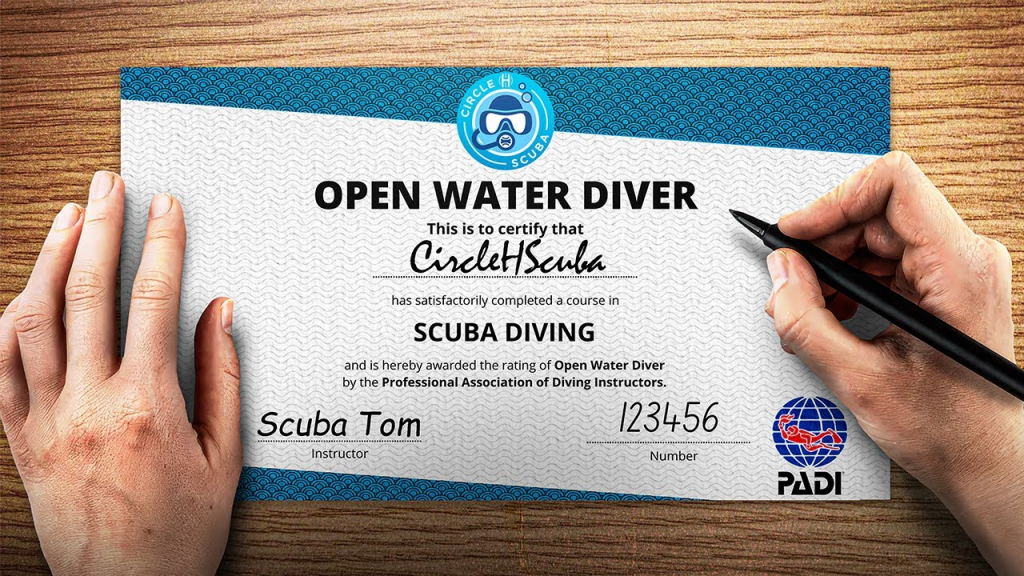
Different Types and Levels of PADI Certifications
PADI provides a variety of courses. The PADI license is divided into different types and levels depending on the diver’s capability.
Types of PADI Certification
- PADI Open Water Diver
It is a basic PADI scuba certification. Applicants should take 4-7 days of training and dive as deep as 18 meters with full gear.
- PADI Advanced Open Water Diver
It is a senior course including a deep dive as deep as 18 meters, a dive with navigation, and 3 specialty dives.
- PADI Enriched Air (Nitrox) Diver
Divers can submerge in water for a longer time with a cylinder filled with Enriched air, or less nitrogen. It takes 1-2 days to get this certification.
- PADI Divemaster
It proves an individual is capable of leading and directing diving. As the highest level of certification, applicants must finish 40 logged dives and obtain a medical and rescue certificate.
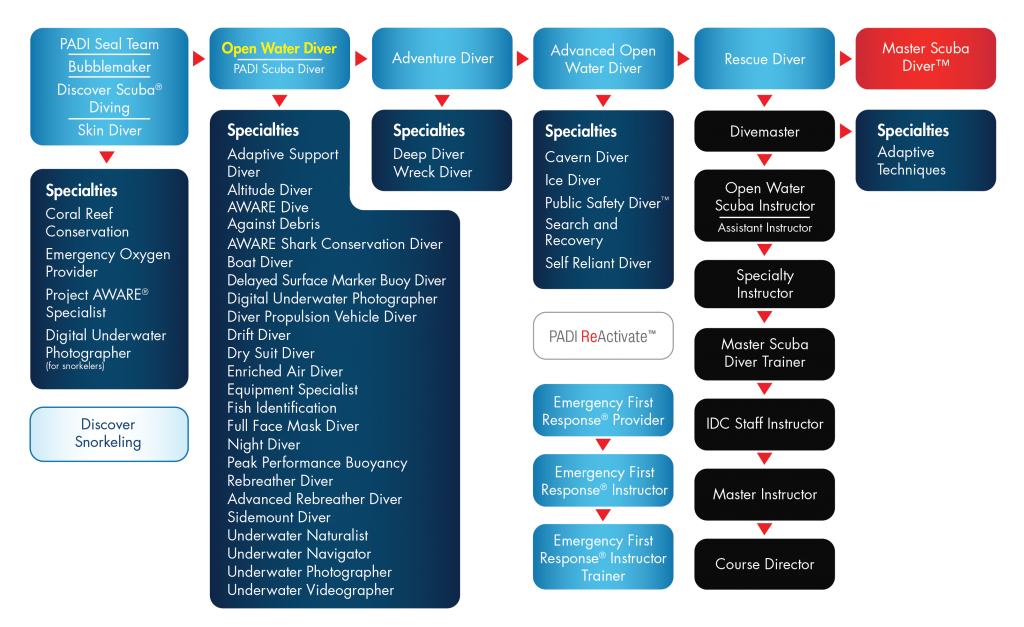
Levels of PADI Diving
- PADI discover scuba diver
It is a basic introduction to diving which takes only one day rather than a formal certification. You will learn about how to breathe under the water and how to dive.
- PADI scuba diver
It is an essential part of obtaining Open Water Diver certification. PADI scuba divers can dive into a depth of 12 meters with an instructor.
- PADI specialty diver
Divers at this level have mastered underwater navigation and deep diving.
- PADI rescue diver
Divers are not only specialized in diving but also are able to solve problems in emergencies under the water, such as identifying distress signals, fixing equipment, etc.
Who Can Apply for PADI Certification?
To get the PADI diving certification, one must complete all required courses. Individuals must satisfy the following requirements to enroll in diving courses.
- Be at least 10 years old for Junior Open Water Diver course;
- Be at least 15 years old for the Open Water Diver course;
- Be able to swim;
- Be physically healthy to dive (proven by medical statement)
How to Get a PADI Certification
After confirming your eligibility for the PADI diving certifications, you can start the following procedures.
- Choose a Training Organization
Many organizations provide scuba diving certifications. When choosing a training organization, it is suggested to do some research on its courses, qualifications, the coaches’ reputation, etc. Professional Association of Diving Instructors (PADI), Scuba Schools International (SSI), and National Association of Underwater Instructors (NAUI) are the most reputable ones that provide safe and professional training.
- Choose the Proper Certification
Each organization offers different types and levels of qualifications. You have to consider a lot of things to pick a suitable course, such as goals, interests, comfort level in the water, budgets, career expectations, etc. For example, novices should join a beginner’s course and seek a PADI open water certification while it is too simple for masters.
- Enroll in the Program
After selecting the certification, you can enroll to join the courses. The organization will ask you to provide personal information and take health evaluations. Only when you are identified to be physically and mentally fit to dive will you be allowed to take the courses. In most cases, people suffering from cardiovascular disease, neurological disorders, asthma, diabetes, pneumothorax, seizures, severe depression, or bipolar disorder might be prevented from scuba diving.
- Take Theoretical Course
Being qualified to learn diving does not mean you can plunge into the water at first course. You have to learn theoretical knowledge first, usually including making diving plans, diving techniques, terminology, underwater gestures, safety procedures, scuba gear usage, and underwater navigation. The courses take about several weeks to a year, either online or offline.
- Train in a Pool
After passing tests for the theoretical courses, it’s time to get into the water. For the sake of safety, it starts with pool training. The instructor will teach you how to use scuba diving equipment which requires basic swimming skills. To enjoy your driving trial safely, you must listen carefully and practice at different depths according to the guidance. You usually need to finish a fixed amount of dives in the pool before going to open waters so as to ensure that you have mastered the basic skills.
- Perform Open-water Dives
Unlike water in the pool, sea waters feature complicated clarity and currents. The training in open water helps adjust to different conditions. Your instructor will stay with you all the time and guide you to put what you have learned into practice. The diving certification will be issued after completing the required number of dives.
How to Access Your PADI Card
A PADI card, also called a PADI certification card, is proof of completing PADI training. There are physical cards and eCards available. For the purpose of environmental protection, the physical card is made from 70 percent recycled plastic and can be purchased on the PADI website.

Some choose to get a bundle of both forms, so you can download a digital card after earning the PADI dive certification. Your PADI Dive Center/Resort or Instructor will help you file a certification application online or by paper after completing all courses. The PADI Office will register your new certification and send it to your provided email address. After receiving the email, please do as follows access a PADI eCard.
- Click on the “SIGN IN HERE” button of the certification to confirm your account which must be done within 24 hours after receiving the email.

- Check your email for a verification code. Fill it in the corresponding field and set up a password.

- Click the “Profile” icon and then “Certifications and Credentials”. Select a certification to see details.

- Download the new PADI App which is available at the Apple App Store or Google Play Store. When you accidentally install the old version, it will remind you to upgrade it.
- Open the App and sign in with the existing account.

- Choose your PADI dive certification to preview the eCard.
- Check the information on the card. If you only see the back side with the PADI logo on a blue background, scroll to the right to swift to the front side. Whenever there is anything wrong, don’t hesitate to tell the PADI customer service team.

- Click on the “Download eCard” button.

How to Make PADI Card Photo Online
A PADI certification photo will be displayed on your physical and electronic card. It should be a 45 x 57 mm (1.75 x 2.25 inches) biometric photo. To save time and money, you can DIY a perfect shot online with the help of AiPassportPhotos, a professional ID photo maker. Let’s see how it works.
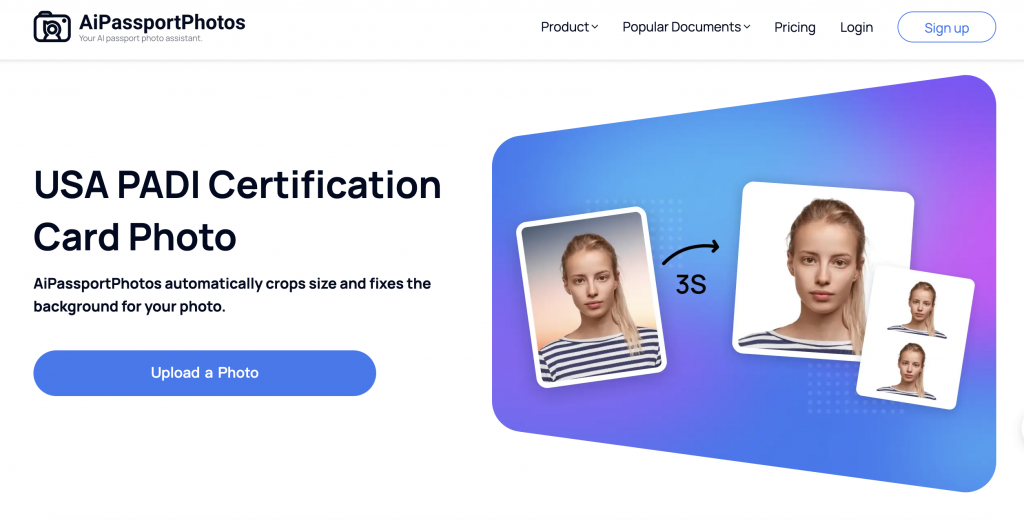
- Take a head-and-shoulder picture at a frontal view with even lighting, a fully visible face, and neutral facial expressions with cellphones or digital cameras.
- Visit the AiPassportPhotos USA PADI Certification Card Photo Page.
- Insert the picture through the “Upload a Photo” button.
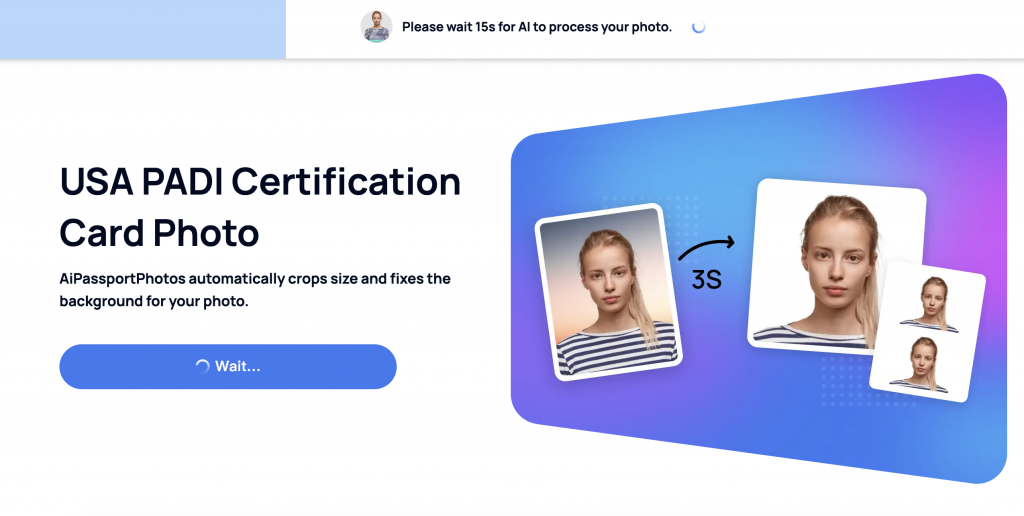
- The online will automatically check photo compliance and crop the image.
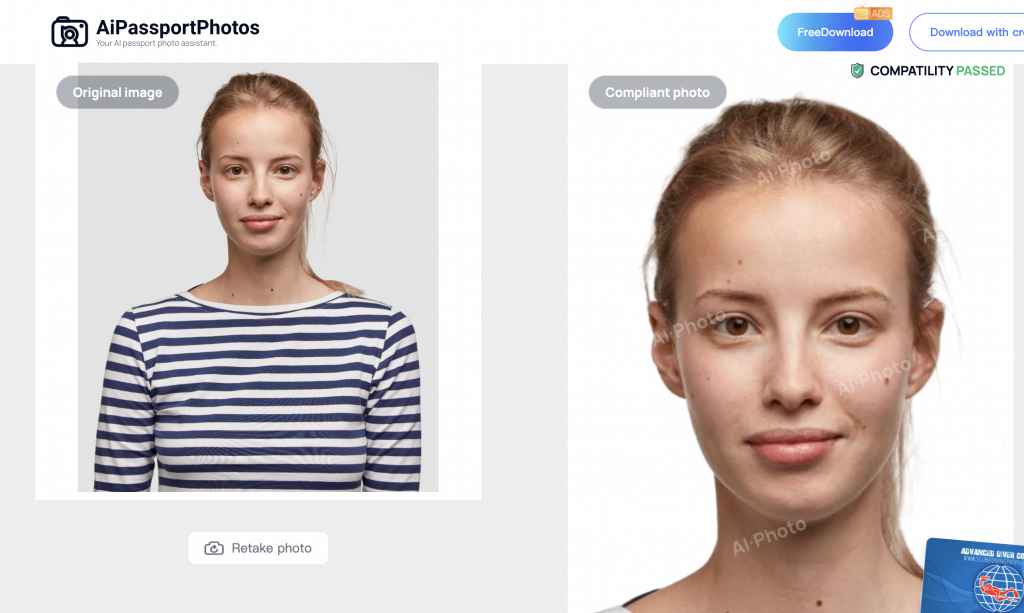
- If the photo is compliant, you will be directed to the preview page in a few seconds. If not, you should upload another image and it will repeat the process above until it makes completely qualified biometric photos.
- Download the digital photo template.
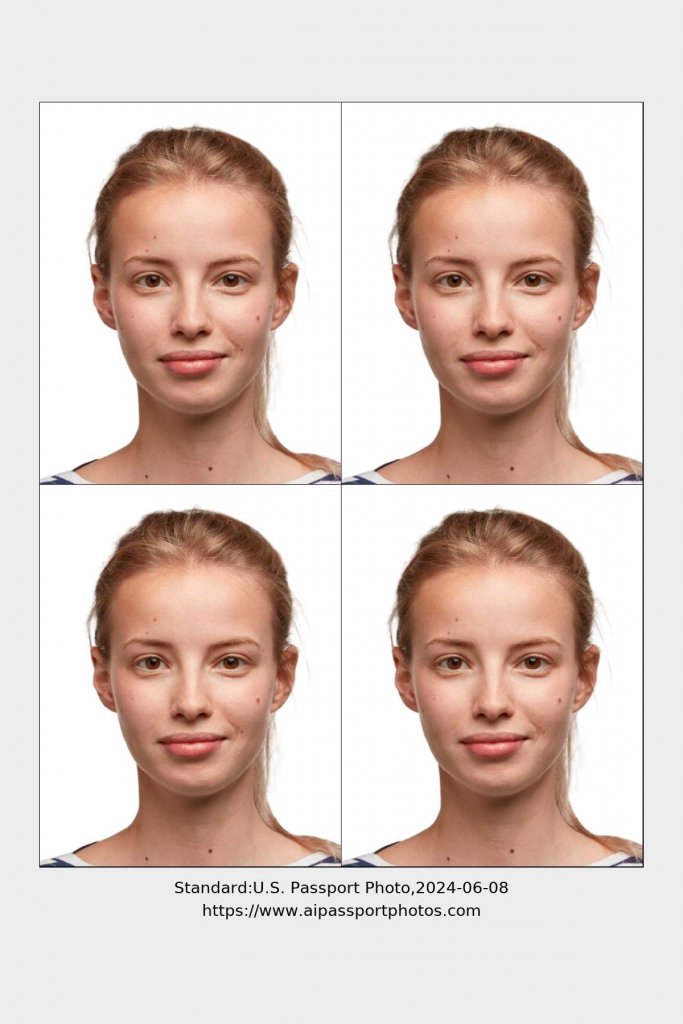
Benefits of Getting PADI Certification
The PADI scuba certification proves your capability and experience in diving, thus accessible to the following benefits.
- Experience Marine World
The ocean occupies about 70% of Earth. Holding a PADI license means you have a chance to reach the mysterious and diverse world under the water.
- Work on Sea Exploration
It is a stepping stone to entering industries related to marine exploration, such as studying marine benthos, touring, and so on. Getting an advanced certification might also bring you higher pay or positions.
- Understand Marine Ecology
Diving into the sea enables you to watch the ocean creatures and how they live closely. In this case, you will have a better understanding of how importance of protecting the environment.
- Expand your Knowledge
Whether you consider diving as a hobby or profession, getting a diving certification will enrich your knowledge and skills, which is beneficial to enrich your life and broaden your horizons.
FAQ
👉 Can I dive without a PADI certification?
Yes, and it is called PADI Discover Scuba Diving.
👉 Do PADI dive cards expire?
No. It is valid for a lifetime.
👉 Does PADI give you a physical card?
Yes. It can be purchased on PADI website.
👉 How much does a replacement PADI card cost?
It costs dozens of dollars depending on the card types, designs, and where you purchase it.
👉 What happens if you forget your PADI card?
Contact your PADI dive center, resort, or instructor to order a replaced card.
👉 How do I check if I am PADI certified?
You can check it at the PADI dive center/resort, on the PADI website, or PADI App by providing your personal information.
Summary
PADI certification certifies a person has completed training courses and diving practice. The organization designs different license types according to the learner’s knowledge, experiences, and skills. Those who have been certified by PADI can obtain a PADI card online or at a physical service center. If you are interested in a new world under the water, start your journey to get PADI diving certifications.